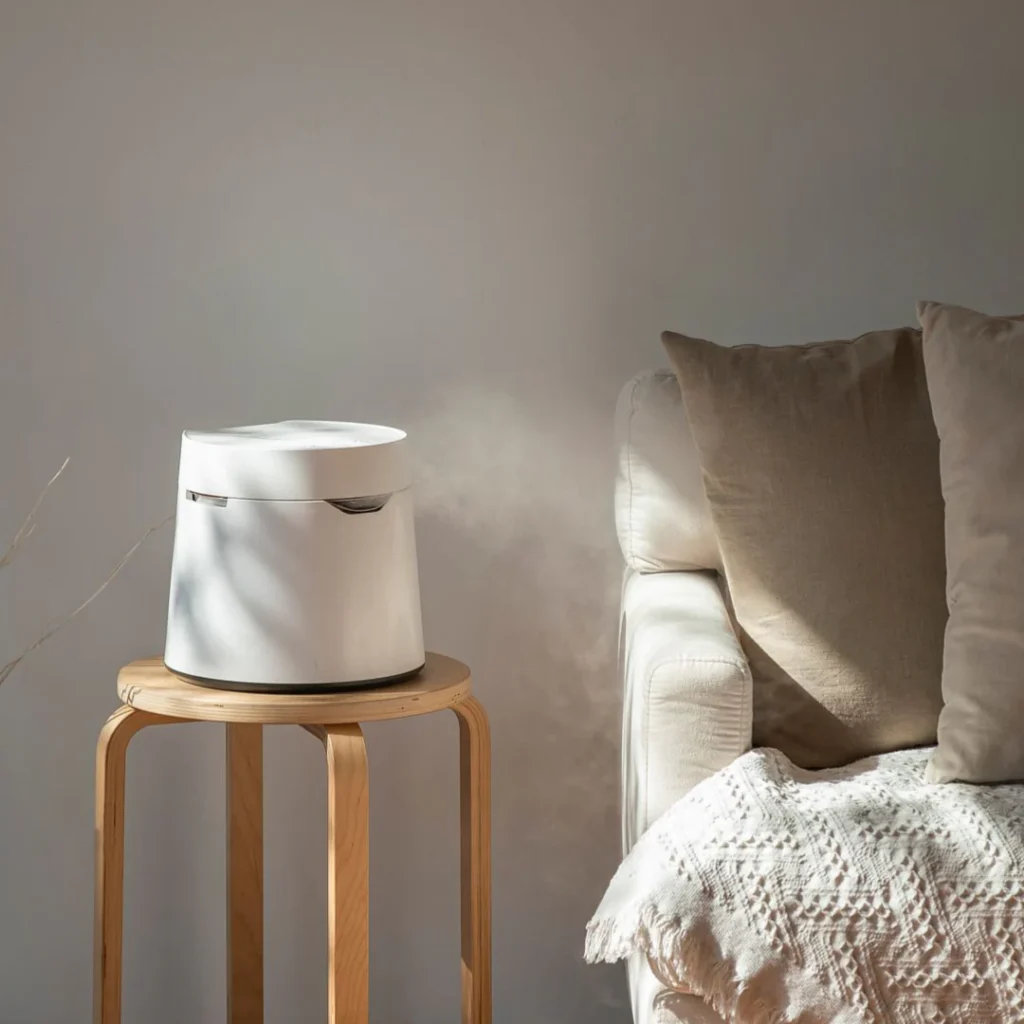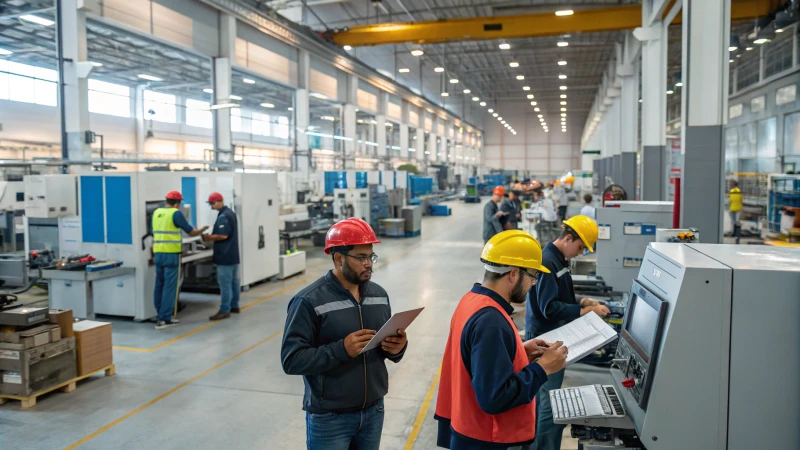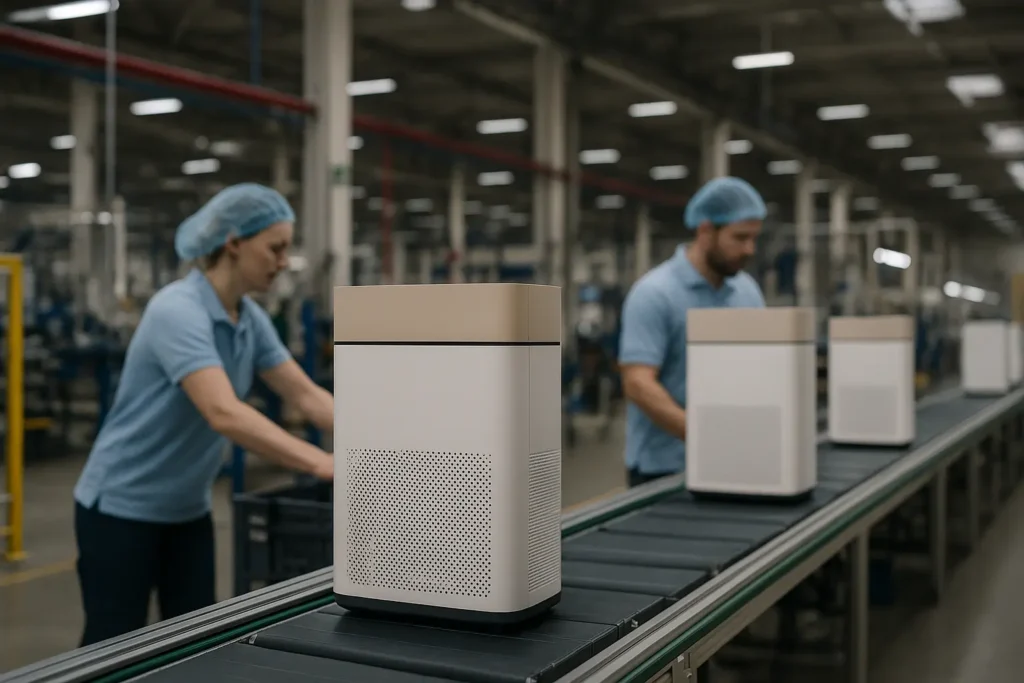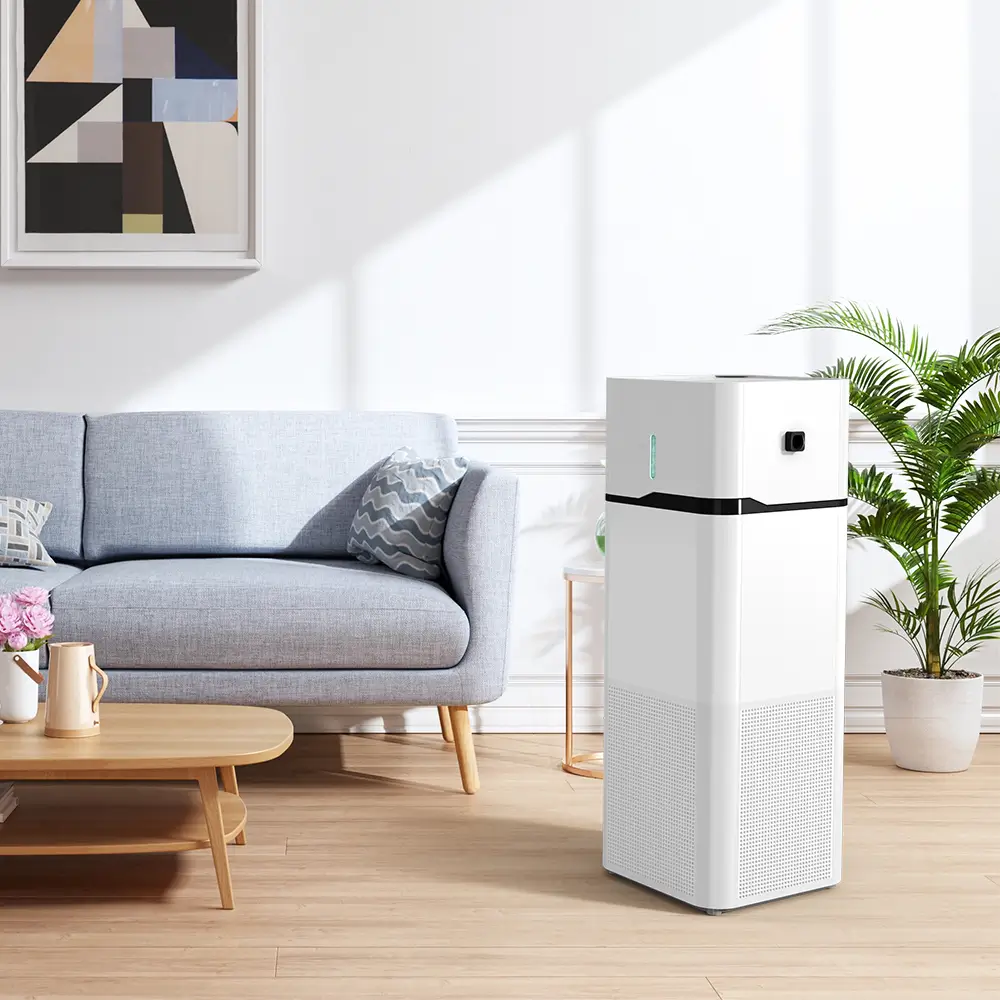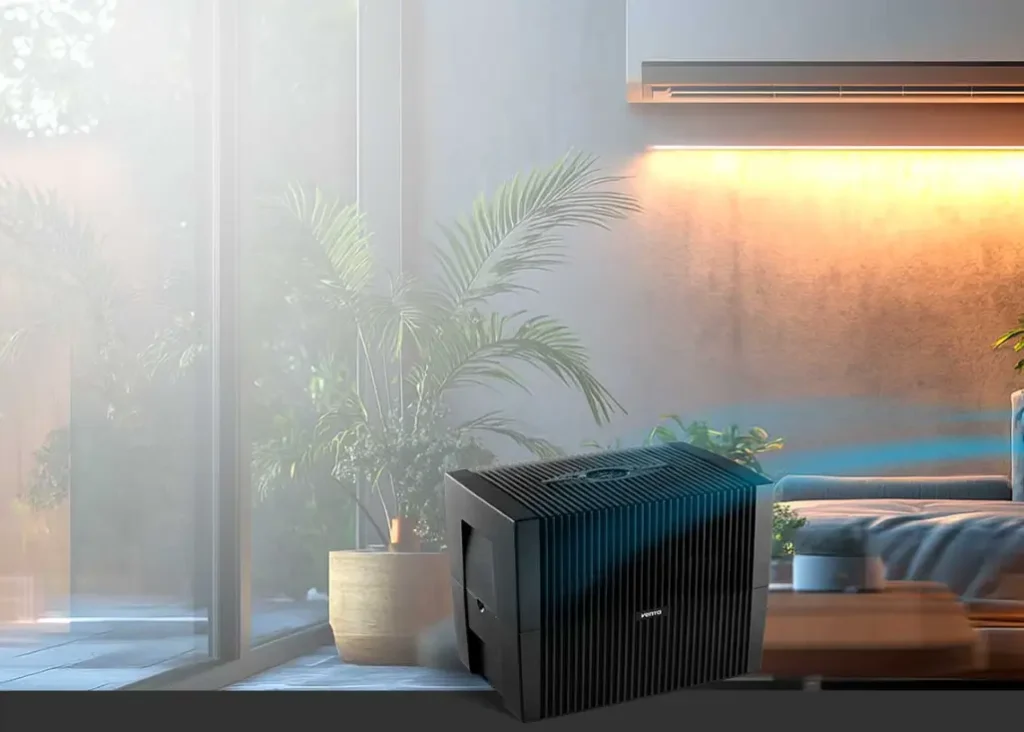
학교와 병원의 공기질 관리는 특히 예산이 빠듯할 때 부담스럽게 느껴질 수 있습니다.
공기청정기의 유지보수 비용을 효과적으로 줄이려면 수명을 연장하는 고효율 필터에 투자하고, 벽걸이형 장치를 선택하여 위험을 최소화하고, HisoAir와 같은 제조업체에서 직접 구매하세요. 통합 IoT 를 통해 적시에 유지 관리 알림을 받는 것도 예산 사용을 최적화하는 데 도움이 됩니다.
이러한 단계는 비용 절감에 직접적인 접근 방식을 제공하지만, 이러한 전략의 광범위한 영향을 이해하면 훨씬 더 큰 비용 절감 효과를 얻을 수 있습니다. 이러한 실용적인 솔루션으로 시설의 공기질 관리를 어떻게 혁신할 수 있는지 자세히 알아보세요.
고효율 필터는 공기청정기 유지 관리 비용을 줄여줍니다.True
이러한 필터는 수명이 길어 교체 빈도와 비용이 줄어듭니다.
고효율 필터의 장점은 무엇인가요?
고효율 필터의 이점을 이해하면 대규모 시설의 공기질 관리에 혁신을 가져올 수 있습니다.
고효율 필터는 더 많은 오염 물질을 포집하여 수명을 연장하고 유지보수 비용을 절감하며 공기질을 개선합니다. 깨끗한 공기가 건강과 예산 관리에 중요한 학교와 병원에 이상적입니다.
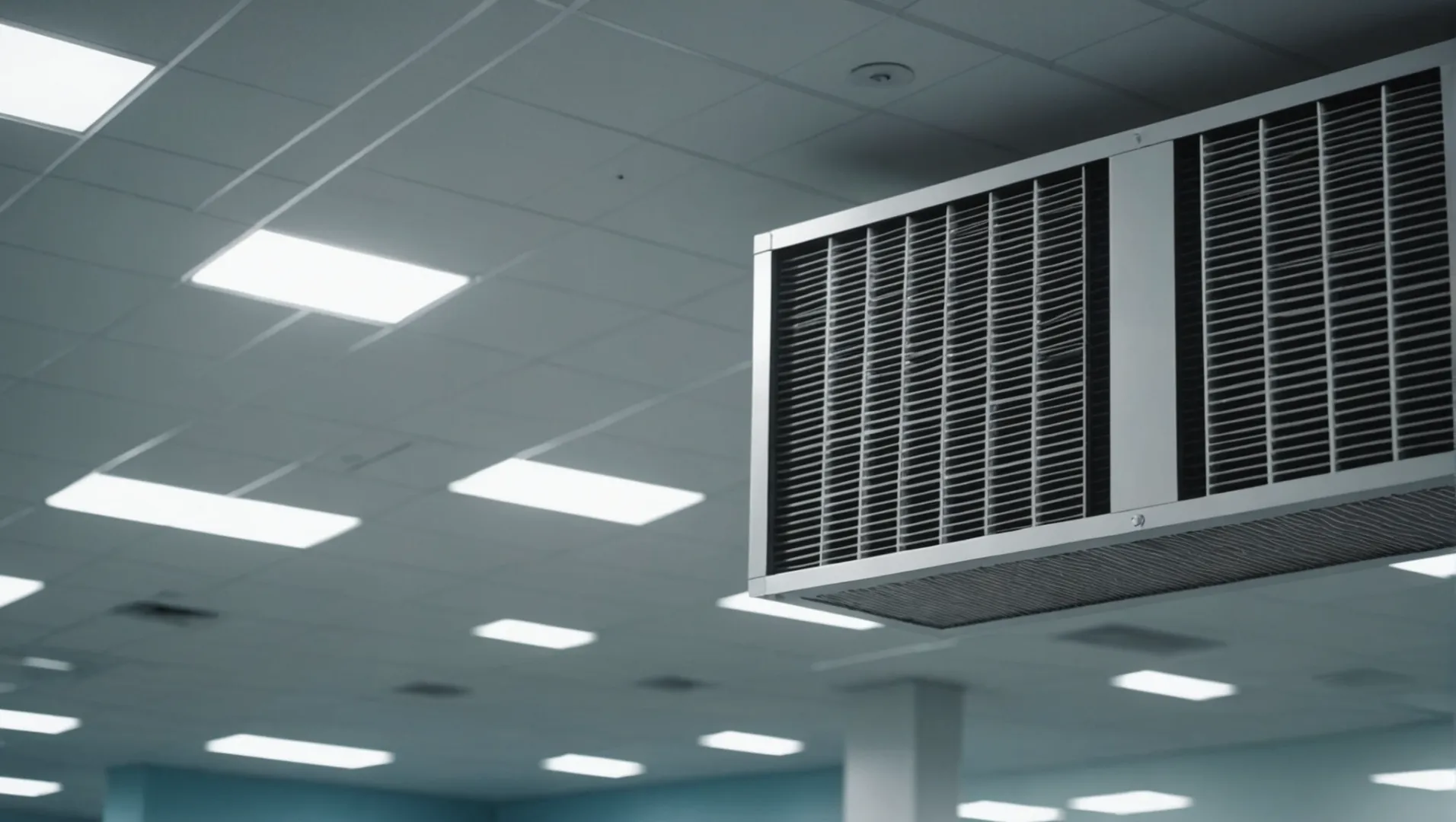
수명 연장 및 비용 절감
고효율 필터는 공기 정화 시스템의 수명을 획기적으로 연장할 수 있습니다. 기존 필터는 6개월마다 교체해야 하지만 고효율 옵션은 1년 이상 사용할 수 있습니다. 이렇게 수명이 연장되면 필터 교체 빈도와 비용이 줄어들어 유지보수 예산을 크게 절감할 수 있습니다. 예를 들어, 다음과 같은 제조업체에서 직접 필터를 구매하면 HisoAir1 는 중간 마진을 제거하여 비용을 더욱 절감할 수 있습니다.
향상된 공기 품질
이 필터는 먼지, 꽃가루, 곰팡이 포자, 박테리아를 포함한 공기 중 입자를 더 많이 포집합니다. 여과 기능이 뛰어나기 때문에 어린이와 환자 등 민감한 인구를 보호하기 위해 공기 청정도가 가장 중요한 학교나 병원과 같은 환경에서 특히 유용합니다. 이 필터는 실내 공기질을 개선함으로써 학교에서는 질병으로 인한 결석을 줄이고 병원에서는 환자의 회복을 돕는 등 보다 건강한 환경을 조성하는 데 기여합니다.
기술 발전
고효율 필터의 기술은 지난 10년 동안 크게 발전해 왔습니다. 청정 공기 전달률이 더 높은 필터 미디어의 혁신(CADR) 필터는 더 많은 양의 공기를 더 효율적으로 처리할 수 있습니다. 누적 청정 질량이 높을수록(CCM), 장시간 동안 최적의 성능을 유지하여 공기 오염 물질로부터 일관된 보호 기능을 제공합니다.
환경 영향
고효율 필터는 필터 교체 빈도를 줄임으로써 환경 지속 가능성에도 기여합니다. 교체 횟수가 적다는 것은 폐기물 발생이 줄어들어 친환경 이니셔티브에 부합하고 시설의 탄소 발자국을 줄인다는 것을 의미합니다. 지속 가능성을 추구하는 시설은 이러한 필터를 광범위한 환경 전략에 통합할 수 있습니다.
실제 구현 시 고려 사항
고효율 필터를 구현할 때는 기존 공기 정화 시스템과의 호환성을 고려하는 것이 중요합니다. 일부 시스템은 더 높은 여과 기준을 수용하기 위해 조정 또는 업그레이드가 필요할 수 있습니다. 또한 IoT 필터 성능을 모니터링하는 기술을 통해 적시에 유지보수 및 교체를 수행하여 효율성과 비용 효율성을 모두 극대화할 수 있습니다.
고효율 필터는 1년 이상 지속됩니다.True
공기 시스템의 수명을 연장하여 1년 이상 지속됩니다.
고효율 필터는 폐기물 발생을 줄입니다.False
교체 빈도를 줄여 낭비를 줄입니다.
휴대용 공기청정기보다 벽걸이형 공기청정기를 선택하는 이유는 무엇인가요?
최적의 공기질을 유지하기 위해 벽걸이형과 휴대용 공기청정기를 선택하는 것은 효과와 비용 모두에 큰 영향을 미칠 수 있습니다.
벽걸이형 공기청정기는 휴대용 장치에 비해 안전성이 향상되고 필터 수명이 연장되며 비용 효율성이 높아 학교와 병원에 이상적입니다.
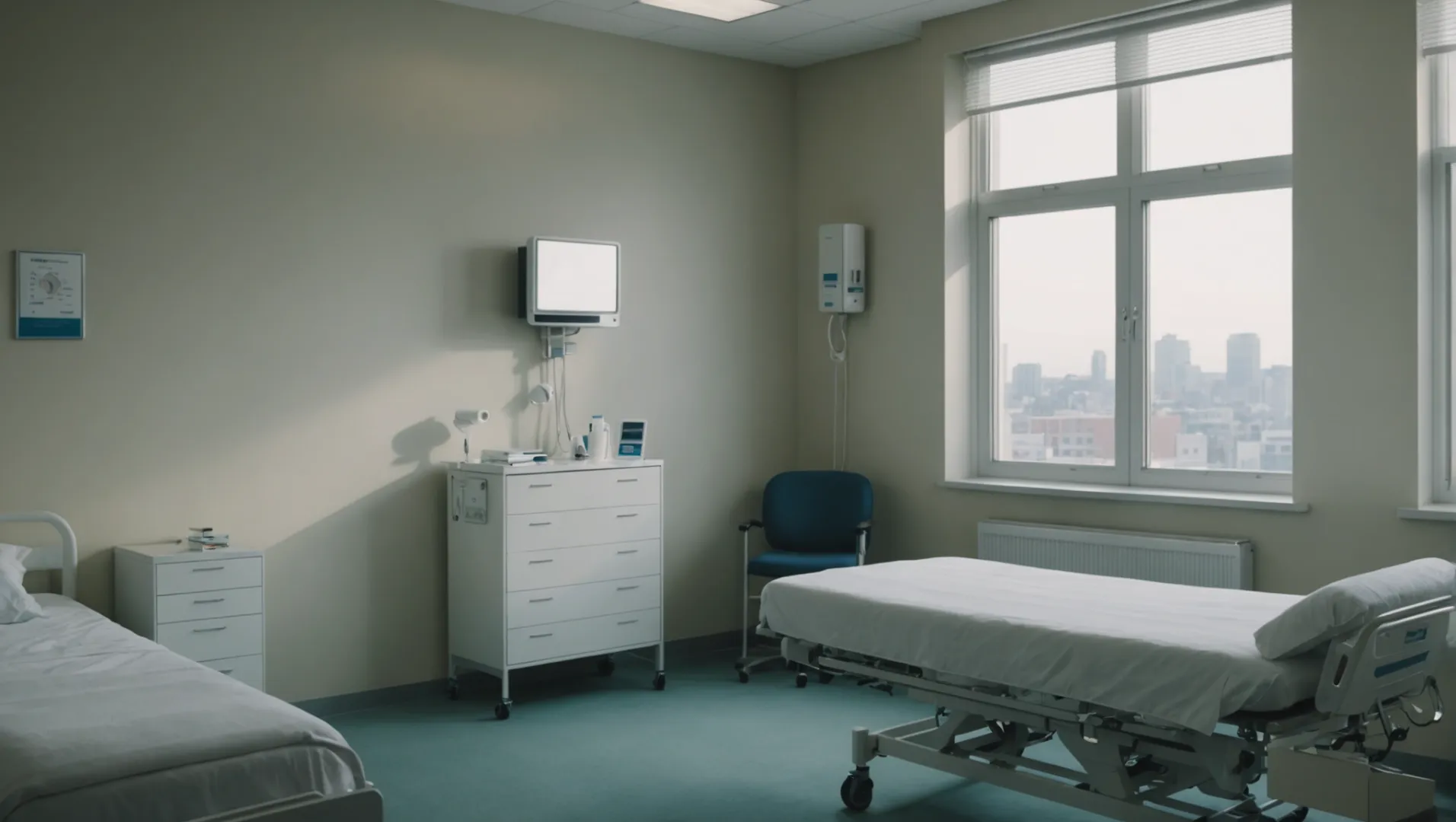
안전 및 공간 효율성
벽걸이형 공기청정기는 간섭을 최소화하는 높이에 안전하게 설치되며, 특히 학교나 병원과 같이 바닥 공간이 협소한 환경에서는 더욱 그렇습니다. 우발적인 손상이나 조작의 가능성이 적어 잠재적인 안전 위험을 줄이고 중단 없이 일관된 작동을 보장합니다.
반대로 휴대용 공기 청정기2 는 쉽게 넘어지거나 가구에 막혀 효율성이 떨어지고 유지보수가 더 자주 필요할 수 있습니다.
비용 효율적인 유지 관리
벽걸이형 장치는 일반적으로 필터 교체 빈도가 낮아 장기적인 비용 절감에 기여합니다. 이러한 시스템의 필터는 막힘과 마모를 방지하는 최적화된 공기 흐름 패턴으로 인해 수명이 더 길어지는 경우가 많습니다.
유지보수 비용을 비교한 연구에 따르면 벽걸이형 장치를 사용하는 시설은 필터 수명을 6개월에서 1년 이상 연장할 수 있어 상당한 비용을 절감할 수 있는 것으로 나타났습니다. 히소에어와 같은 제조업체에서 교체용 필터를 직접 구매하면 비용을 더욱 절감할 수 있습니다.
향상된 기술 통합
의 발전으로 IoT 기술을 통해 벽걸이형 공기청정기를 기존 시스템에 쉽게 통합하여 실내 공기질을 모니터링할 수 있습니다. 이러한 통합을 통해 실시간 데이터 수집과 필터 교체를 위한 자동 알림이 가능하므로 불필요한 유지보수 점검을 줄이면서 장치가 최고의 성능으로 작동하도록 보장합니다.
이 기능은 일관된 공기질이 중요한 병원이나 학교와 같이 유동인구가 많은 환경에서 특히 유용합니다. IoT 통합을 통해 원활한 관리가 가능하므로 시설 관리자는 공기질 기준을 유지하면서 리소스를 효율적으로 할당할 수 있습니다.
학교와 병원을 위한 실용적인 고려 사항
교육 및 의료 환경에서는 항상 안전과 위생이 최우선입니다. 벽걸이형 공기청정기는 위치 특성상 효과적인 공기 정화를 제공할 뿐만 아니라 학생이나 환자의 손이 닿지 않는 곳에 배치할 수 있습니다. 따라서 오염이나 간섭의 위험이 줄어듭니다.
또한 휴대용 모델보다 조용한 경향이 있어 방해 요소를 최소화하고 학습과 치유에 도움이 되는 평화로운 환경을 조성합니다.
| 기능 | 벽걸이형 | 휴대성 |
|---|---|---|
| 안전 | 높음(손이 닿지 않음) | 낮음(쉽게 액세스 가능) |
| 필터 수명 | 확장 | 표준 |
| 비용 | 장기적으로 더 낮은 | 장기적으로 더 높은 |
| 통합 | IoT 호환 가능 | 제한적 |
| 소음 수준 | 낮음 | 변수 |
민감한 환경에서 업그레이드 또는 설치를 고려하는 의사 결정권자에게 이러한 요소는 벽걸이형 공기청정기가 신중한 선택인 이유를 명확하게 보여줍니다.
벽걸이형 정수기는 필터 수명이 더 깁니다.True
벽걸이형 장치의 공기 흐름을 최적화하면 필터 수명이 연장되어 비용이 절감됩니다.
휴대용 정수기는 학교에서 안전성이 떨어집니다.True
휴대용 기기는 넘어질 수 있어 바쁜 환경에서는 안전에 위험이 될 수 있습니다.
어떻게 IoT 통합 공기청정기 유지보수 최적화?
공기청정기가 유지보수가 필요한 시기를 효율적으로 알려주어 학교와 병원의 운영을 간소화하는 세상을 상상해 보세요.
IoT 통합은 실시간 모니터링과 적시 알림을 제공하여 효율이 떨어지기 전에 필터를 교체할 수 있도록 함으로써 공기청정기 유지보수를 개선합니다. 이러한 사전 예방적 접근 방식은 공기질을 최적화하고 수동 점검을 줄이며 장비 수명을 연장합니다.
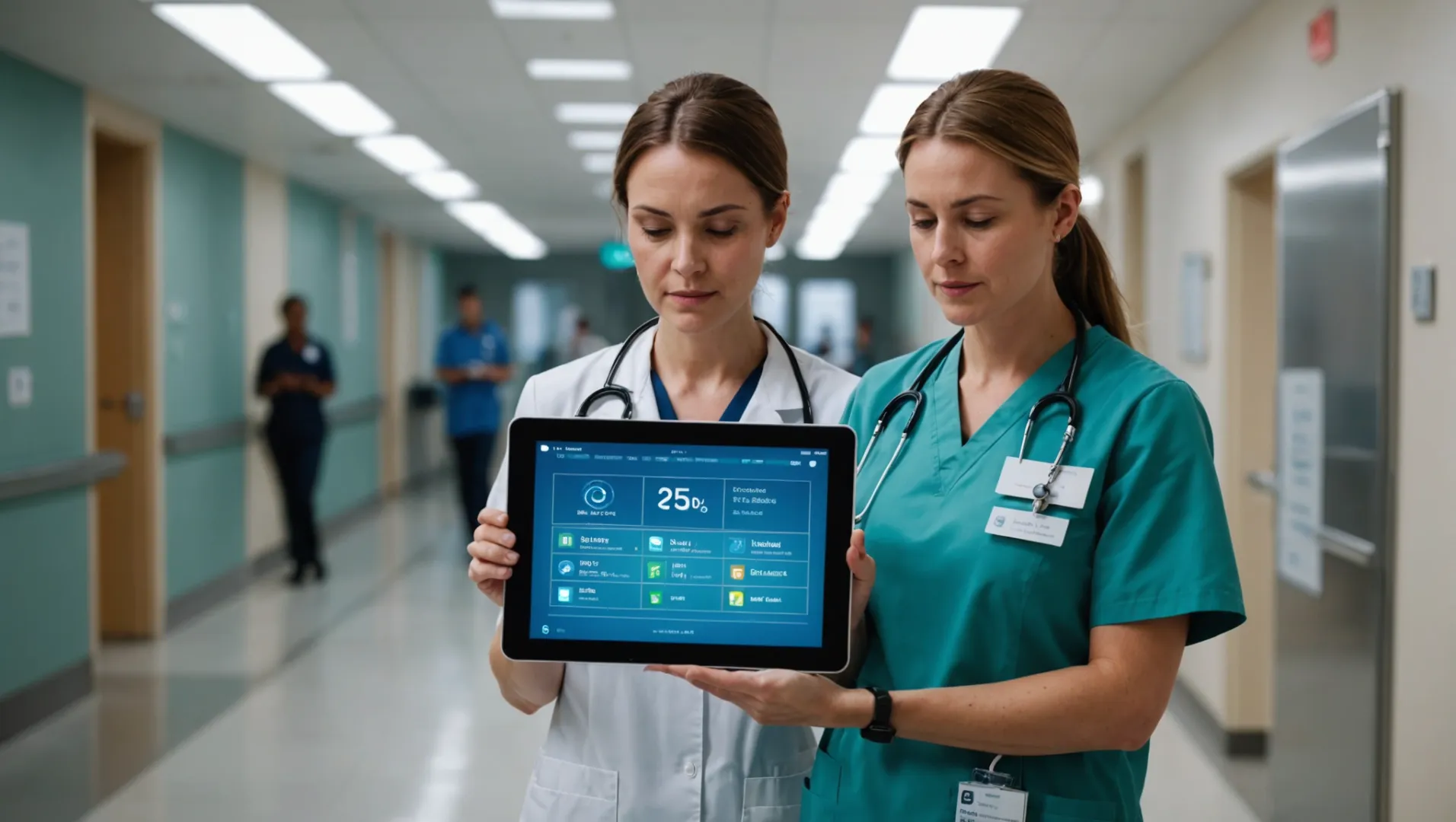
의 역할 IoT in 대기질 모니터링
사물 인터넷(IoT)는 실내 공기질을 지속적으로 추적하는 스마트 센서를 내장하여 공기청정기 유지관리 방식을 혁신적으로 개선했습니다. 이 센서는 미세먼지, 습도 및 기타 오염 물질에 대한 실시간 데이터를 제공하여 시설에서 최적의 상태를 유지할 수 있도록 합니다. 이 데이터를 통해 시설 관리자는 필터 서비스 또는 교체 시점에 대한 정보에 입각한 결정을 내릴 수 있어 항상 최고의 성능으로 작동할 수 있습니다.
시기적절한 알림 및 예측적 유지보수
의 가장 중요한 장점 중 하나는 IoT 통합은 유지보수가 필요할 때 적시에 알림을 받을 수 있는 기능입니다. 고정된 일정이나 수동 검사에 의존하지 않아도 됩니다, IoT-지원 시스템은 실제 사용 패턴을 기반으로 필터의 효율이 저하될 수 있는 시기를 예측합니다. 이러한 예측 유지보수를 통해 공기청정기의 수명을 연장할 뿐만 아니라 병원과 같이 민감한 환경에서 운영 중단을 초래할 수 있는 갑작스러운 고장을 방지할 수 있습니다.
사례 연구: HisoAir의 IoT 솔루션
HisoAir와 같은 기업은 통합의 선두에 서 있습니다. IoT 를 공기 정화 시스템에 도입했습니다. 이들은 필터 상태, 교체 필요성, 전반적인 시스템 성능에 대한 인사이트를 제공하는 첨단 센서를 개발했습니다. 이러한 기술을 채택함으로써 학교와 병원은 유지 관리 부담을 크게 줄이는 동시에 학생과 환자에게 더 건강한 환경을 보장할 수 있습니다.
| 기능 | 혜택 |
|---|---|
| 실시간 모니터링 | 공기질 문제를 즉시 파악 |
| 자동 알림 | 수동 점검에 대한 의존도 감소 |
| 예측적 유지보수 | 필터 수명 연장 및 비용 절감 |
향후 전망 IoT in 공기 정화
As IoT 기술이 발전함에 따라 공기 정화 분야에서의 적용은 더욱 확대될 것으로 예상됩니다. 미래의 시스템은 더욱 정교한 분석 기능을 제공하여 광범위한 건물 관리 시스템과 통합하여 환경 제어에 대한 총체적인 접근 방식을 제공할 수 있습니다. 살펴보기 IoT 공기 청정기의 발전3 는 유지 관리 및 운영 효율성의 잠재적 개선에 대한 추가 인사이트를 제공할 수 있습니다.
IoT 통합으로 공기청정기 수동 점검이 줄어듭니다.True
IoT는 실시간 모니터링 및 알림을 제공하여 수동 점검을 최소화합니다.
IoT 지원 공기청정기는 수명이 더 짧습니다.False
IoT를 통한 예측 유지보수로 공기청정기의 수명을 연장합니다.
비용 효율적인 교체용 필터는 어디서 구할 수 있나요?
학교와 병원에서 과도한 지출 없이 공기질을 유지하려면 예산 친화적인 교체용 필터를 찾는 것이 중요합니다.
비용 효율적인 교체용 필터를 조달하려면 HisoAir와 같은 제조업체에서 직접 구매하거나 대량 구매 할인을 활용하고 내구성이 뛰어난 고효율 모델을 선택하여 필터 수명을 연장해야 합니다.
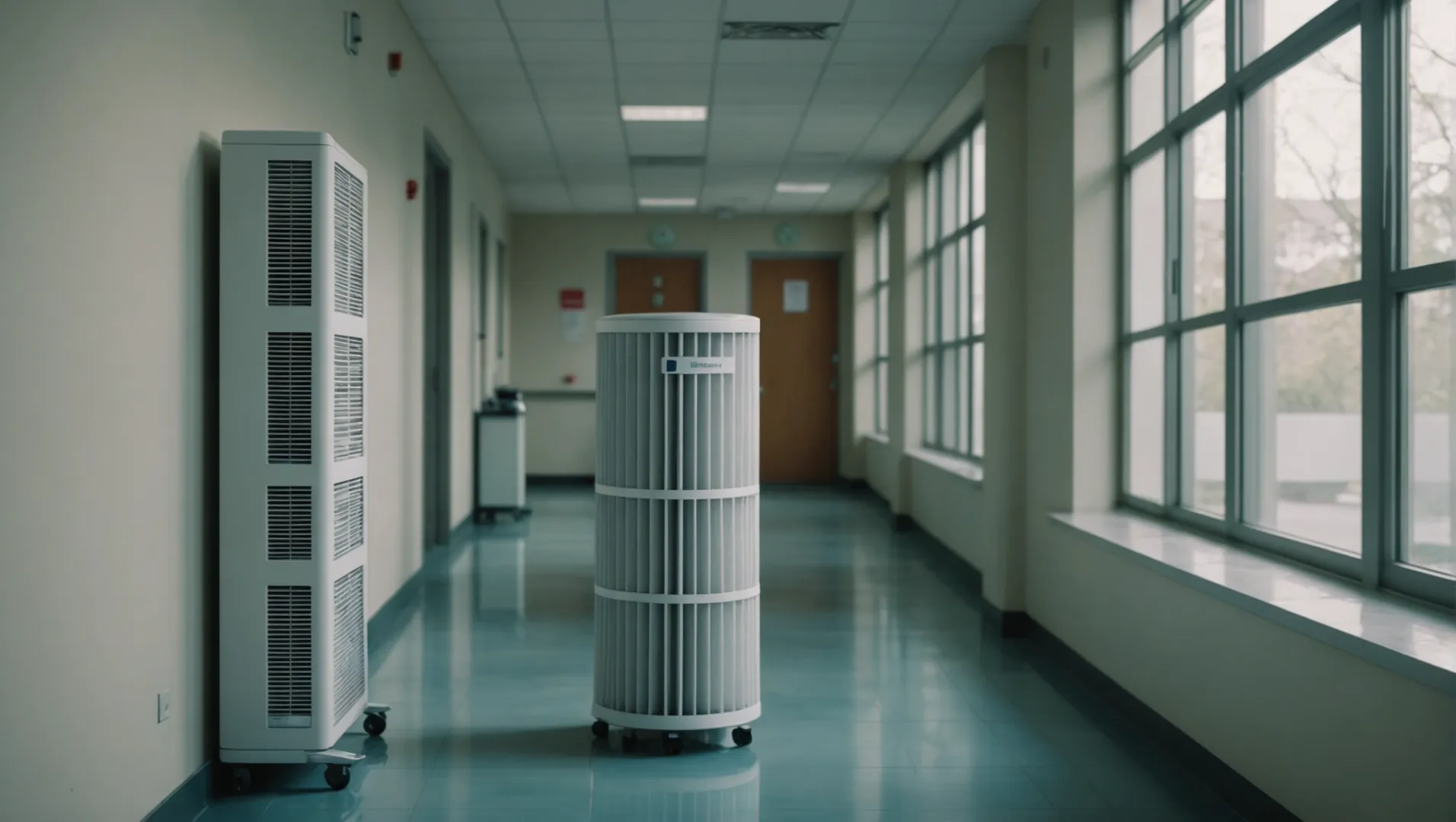
제조업체 직접 구매
비용 효율적인 교체용 필터를 조달하는 가장 효과적인 전략 중 하나는 다음과 같은 제조업체에서 직접 구매하는 것입니다. HisoAir4. 브랜드별 유통업체나 현지 수입업체를 우회함으로써 비용을 크게 절감할 수 있습니다. 제조업체는 종종 대량 할인이나 구독 서비스를 제공하여 비용을 더욱 절감할 수 있습니다.
필터 효율성과 수명에 대한 이해
수명이 긴 고효율 필터에 투자하면 잦은 교체 횟수를 줄일 수 있을 뿐만 아니라 일관된 공기 품질을 보장할 수 있습니다. 청정 공기 전달률이 높은 필터(CADR) 및 먼지 보유 용량이 표준 필터보다 최대 2배 더 오래 지속되므로 시간이 지남에 따라 교체 횟수가 줄어듭니다. 따라서 사용한 필터를 폐기할 때 발생하는 경제적 부담과 환경에 미치는 영향을 모두 줄일 수 있습니다.
| 필터 유형 | 평균 수명 | 비용 절감 잠재력 |
|---|---|---|
| 표준 | 6-12개월 | 낮음 |
| 고효율 | 12-24개월 | 높음 |
활용 IoT 효율적인 관리를 위한
사물 인터넷 통합(IoT) 기술을 공기청정기에 적용하여 공기질과 필터 상태를 실시간으로 모니터링할 수 있습니다. 이를 통해 필요할 때만 필터를 교체할 수 있어 조기 교체를 방지하고 각 필터의 수명을 극대화할 수 있습니다. IoT 시스템은 적시에 알림과 데이터 분석을 제공하여 유지 관리 요구 사항에 대한 더 나은 계획과 예산을 수립할 수 있습니다.
대량 구매 혜택
여러 대의 공기청정기를 관리하는 기관에서는 대량 구매가 재정적으로 현명한 선택이 될 수 있습니다. 많은 제조업체에서 대량 주문 시 상당한 할인 혜택을 제공하여 필터 교체에 드는 단위당 비용을 절감할 수 있습니다. 이 전략은 비용을 절감할 뿐만 아니라 시설에 필터를 즉시 공급할 수 있어 품절로 인한 가동 중단을 방지할 수 있습니다.
비용 절감과 효율성을 극대화하려면 시설 관리자는 이러한 모든 전략을 종합적으로 고려해야 합니다. 내구성이 뛰어나고 효율적인 필터에 투자하고, 제조업체에서 직접 구매하고, 다음과 같은 방법을 활용하면 됩니다. IoT 기술을 통해 학교와 병원은 유지보수 비용을 과도하게 지출하지 않고도 높은 공기질 기준을 유지할 수 있습니다.
대량 구매를 통해 필터 비용을 크게 절감할 수 있습니다.True
대량 구매는 종종 할인으로 이어져 단위당 비용을 낮춥니다.
IoT 기술은 공기 필터의 수명을 단축합니다.False
IoT는 필터 상태를 모니터링하여 시기적절하고 효율적인 교체를 보장합니다.
결론
이러한 전략을 구현함으로써 학교와 병원은 예산 효율성을 유지하면서 더 건강한 환경을 보장할 수 있습니다.
-
히소에어에서 직접 구매하여 교체 비용을 절감하는 방법을 알아보세요: "최대 정화, 최소 소음"에 대한 당사의 약속이 엄격한 기준을 충족하는 공기 정화 분야의 독보적인 전문성을 위해 HisoAir를 선택하세요. ↩
-
각 유형이 안전 및 유지보수 비용에 어떤 영향을 미치는지 알아보세요: 실내 천장에 장착하는 고정식 HEPA 공기 청정기는 일반적으로 휴대용 HEPA 여과 장치보다 더 조용하고 효과적이며 작동 속도가 빠릅니다. ↩
-
공기 청정기 효율성을 향상시키는 최첨단 IoT 애플리케이션에 대한 최신 정보를 확인하세요: 이 새로운 가젯의 고급 기능에는 실시간 모니터링, 자동화, 스마트 홈 시스템과의 상호 작용 등이 포함됩니다. ↩
-
비용 절감을 위한 HisoAir의 직접 구매 혜택 알아보기 ..: 진정한 HEPA 필터. 모델: F040. 필터 구성 : 복합 여과지 + ... sales@hisoair.com; +86 138 0961 9940; +86 138 0961 9940; 사무실: 712호실 ... ↩



